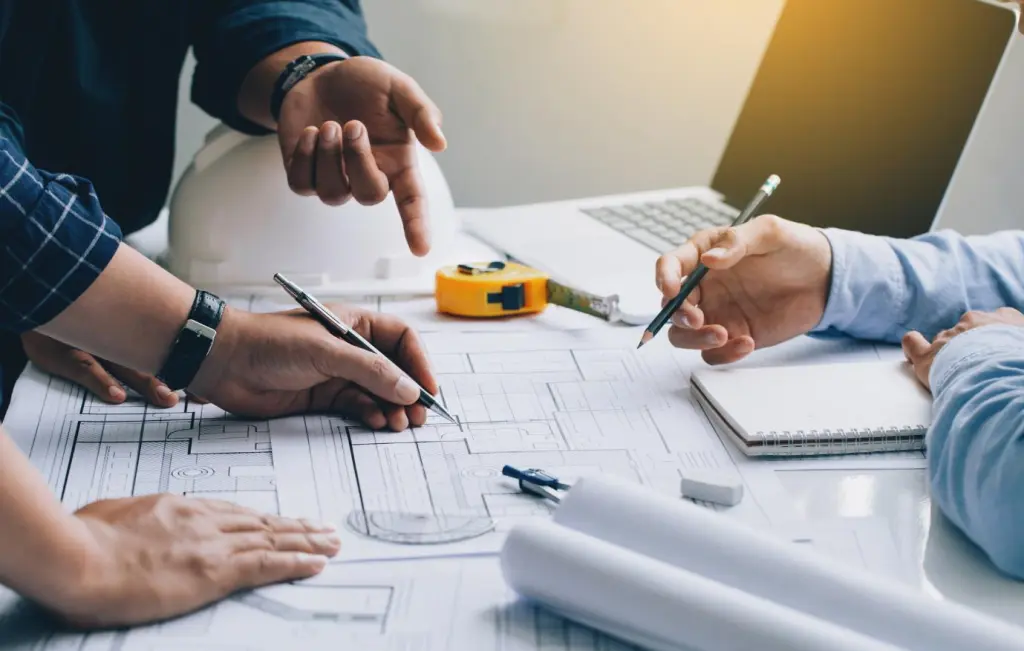The Main Types of Architectural Construction Drawings: Understanding their Importance in Construction Projects
Construction drawings are the backbone of any building project. They are the visual representations of the design that allow architects, engineers, and construction professionals to communicate and collaborate on the details of a project. There are many types of architectural construction drawings, each with its own unique purpose and importance in the building process. In this blog post, we will discuss the main types of architectural construction drawings and how they can be used to improve the efficiency and accuracy of building projects.
The Purpose of Architectural Construction Drawings
Architectural construction drawings serve several purposes, including communication, design, and construction. Communication is a critical component of any construction project, and drawings are an effective means of conveying design and construction information. Design drawings are used to develop and refine design concepts, while construction drawings provide the information necessary to construct the building. These drawings are also used to obtain building permits and to coordinate with other trades on the job site.
Understanding the Different Types of Architectural Construction Drawings
There are several types of architectural construction drawings, each serving a specific purpose in the construction process. Understanding these drawings and their purpose is essential to the success of any construction project.
- Floor plans are one of the most common types of architectural construction drawings. They provide a horizontal view of the building and are used to illustrate the layout of rooms, walls, and other features. Floor plans also show the location of doors, windows, and other openings. They are an essential tool for design and construction and provide a basis for other types of drawings.
- Elevations are drawings that show the vertical views of the building’s exterior walls. They provide information on the height and shape of the building and show the location of windows, doors, and other features. Elevations are essential for communicating the building’s design and appearance to the client and other stakeholders.
- Sections are drawings that show a cutaway view of the building. They are used to illustrate the interior spaces of the building and show the location of structural elements such as beams and columns. Sections are an essential tool for coordinating with other trades and ensuring that all building systems work together.
- Details are drawings that provide information on specific building elements, such as doors, windows, and stairs. They show how these elements are constructed and how they connect with other parts of the building. Details are an essential tool for ensuring that the building is constructed according to the design intent.
- Site plans are drawings that show the building’s location on the site and its relationship to other buildings, roads, and other features. They provide information on the grading and drainage of the site and are used to obtain building permits.
- Electrical plans are drawings that show the location of electrical systems, including outlets, switches, and lighting fixtures. They provide information on the electrical load of the building and are essential for coordinating with electrical contractors.
- Plumbing plans are drawings that show the location of plumbing systems, including pipes, fixtures, and water heaters. They provide a detailed overview of the plumbing system that will be installed in a building, including the locations of water supply lines, waste lines, and vent stacks. These plans are critical for ensuring that plumbing systems are properly designed and installed and that they meet all applicable codes and regulations.

To help illustrate the benefits of each type of architectural construction drawing, let’s dive into some scenarios that may arise during a construction project.
Scenario 1: Designing a New Commercial Building
When designing a new commercial building, architects and engineers need to collaborate to create a design that meets the client’s specifications while also adhering to local building codes and regulations. In this scenario, a combination of different types of architectural construction drawings would be required.
First, a set of floor plans would be created to show the layout of each floor of the building. These plans would include details such as the placement of walls, doors, and windows, as well as the location of plumbing and electrical systems.
Next, a set of elevation drawings would be created to show the exterior of the building from various angles. These drawings would include details such as the height of the building, the placement of windows and doors, and any decorative elements such as mouldings or cornices.
In addition, a set of section drawings would be created to show the internal structure of the building. These drawings would include details such as the thickness of walls, the placement of structural elements such as beams and columns, and the location of mechanical systems such as HVAC ducts.
Scenario 2: Renovating an Existing Home
When renovating an existing home, architects and engineers need to work with the existing structure to create a design that meets the client’s needs while also addressing any issues with the existing building. In this scenario, a combination of different types of architectural construction drawings would also be required.
First, a set of existing condition drawings would be created to document the current state of the building. These drawings would include details such as the layout of each floor, the location of walls, windows, and doors, and the location of plumbing and electrical systems.
Next, a set of demolition plans would be created to show which parts of the building will be removed or altered during the renovation process. These plans would include details such as the location of walls that will be removed or modified, as well as any changes to the plumbing or electrical systems.
Finally, a set of construction plans would be created to show the new design for the renovated space. These plans would include details such as the new layout of each floor, the placement of new walls, windows, and doors, and any changes to the plumbing or electrical systems.

Conclusion
In conclusion, the main types of architectural construction drawings—floor plans, elevation drawings, section drawings, existing condition drawings, demolition plans, and construction plans—each serve a specific purpose in the construction process. By utilizing the appropriate types of drawings for a given project, architects and engineers can ensure that their designs are accurate, complete, and in compliance with all applicable building codes and regulations.
As a construction professional, it’s important to have a solid understanding of these types of drawings and their role in the construction process. At ADDMORE Services, we offer a range of outsourcing services for architectural construction drawings to help you streamline your workflow and improve the accuracy of your designs. Contact us today to learn more about how we can help you with your next construction project.








